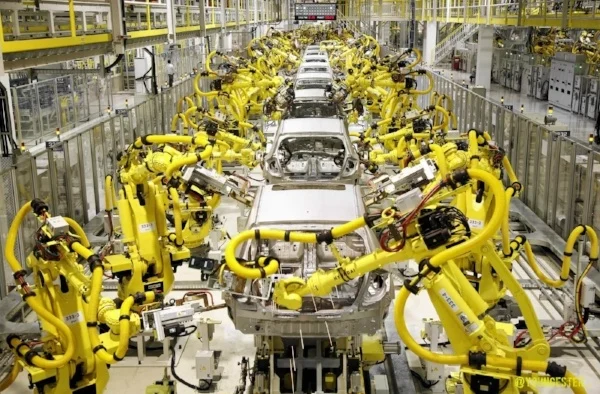Robotics in Agriculture: Revolutionizing Farming Practices
- Tayyeb Momin
- Jul 31, 2023
- 3 min read
Welcome back to our blog series on robotics and its impact on various industries. In our first post, we delved into the world of robotics in manufacturing. Today, we shift our focus to another significant sector that has embraced automation and robotics with open arms: agriculture. With the pressing need to address global food security, optimize resource utilization, and mitigate labor shortages, the integration of robotics in agriculture has emerged as a game-changer. This article will explore the transformative potential of robotics in agriculture through the lens of various captivating case studies.
1. Precision Farming with Drones:
Drones equipped with advanced imaging technologies have revolutionized precision farming practices. Companies like DJI and Parrot have developed unmanned aerial vehicles (UAVs) capable of collecting high-resolution images of crops and fields, enabling farmers to identify and address issues such as irrigation problems, pest infestations, and nutrient deficiencies. By providing real-time data, drones enhance crop monitoring, improve yield predictions, and optimize the use of fertilizers and pesticides.
Case Study: Vineyard Management in California
Vineyards in California have embraced precision farming techniques, including the use of drones, to optimize grape production and vineyard management. Equipped with high-resolution cameras and multispectral sensors, drones capture detailed images of grapevines, allowing early detection of diseases, nutrient deficiencies, and pest infestations.

By analyzing this data, vineyard operators can strategically allocate resources, optimize irrigation, and minimize the use of water, fertilizers, and pesticides. The integration of drones in vineyard management has improved grape quality and sustainability practices.
2. Autonomous Robotic Harvesting:
Labor-intensive tasks such as harvesting fruits and vegetables pose significant challenges due to labor shortages and rising costs. Autonomous harvesting robots have emerged as a solution, demonstrating remarkable dexterity and efficiency in handling delicate crops.
Case Study: Strawberry Picking in Japan
Japan, known for its delicate and high-quality strawberries, faces a shortage of laborers willing to perform the time-consuming task of strawberry picking. To address this issue, companies like Shibuya Seiki have developed robotic systems capable of identifying and gently picking ripe strawberries. These robots navigate through rows of plants, using cameras and sensors to locate and harvest each strawberry, minimizing damage and maintaining quality standards.
3. Weed Control and Crop Monitoring:
Weeds compete with crops for resources, hampering growth and reducing yields. Traditional weed control methods often involve the use of herbicides, which can have detrimental environmental effects. Robotic weed control systems offer a sustainable alternative by precisely targeting and removing weeds without harming the crops.
Case Study: LettuceBot Revolutionizes Weeding
Blue River Technology, now a part of John Deere, developed LettuceBot, an intelligent robotic system that uses computer vision and machine learning to identify and eliminate weeds in lettuce fields. By distinguishing between crops and weeds, LettuceBot selectively sprays herbicides, minimizing chemical usage and reducing the manual labor required for weeding. This technology significantly improves efficiency, reduces costs, and promotes sustainable farming practices.

Conclusion:
The integration of robotics in agriculture holds immense potential for revolutionizing farming practices across the globe. From precision farming with drones to autonomous robotic harvesting and weed control, these innovative technologies provide solutions to challenges such as labor shortages, resource optimization, and sustainable crop production. The case studies highlighted in this article demonstrate the transformative impact of robotics in agriculture, paving the way for increased efficiency, productivity, and environmental sustainability.
As we progress further into the digital age, it is crucial for farmers and agricultural stakeholders to embrace these advancements and leverage robotics to unlock new levels of productivity and sustainability. The future of agriculture lies in the seamless fusion of human expertise and robotic assistance, empowering farmers to meet the ever-growing demands for food production in an efficient and sustainable manner.




Comments